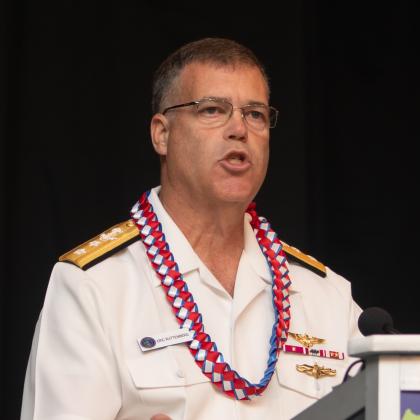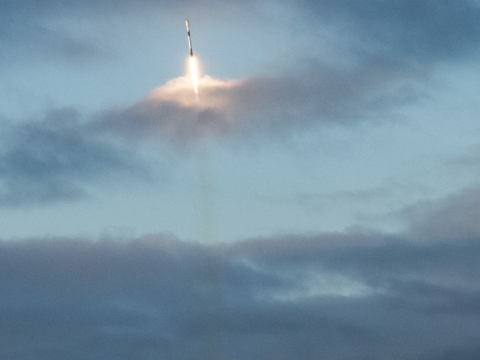Indo-Pacific: The Stakes Could Not Be Higher
In a heavily complex environment, the Indo-Pacific region calls for collaboration among allies and industry partners to develop innovative systems and solutions to mitigate adversarial threats.
Kicking off the annual TechNet Indo-Pacific conference in Honolulu, Hawaii, on November 7, Reserve Deputy Commander for the U.S. Pacific Fleet Rear Adm. Eric C. Ruttenberg took center stage as the keynote speaker.
Through the Pacific Deterrence Initiative (PDI), Adm. Ruttenberg explained, the Department of Defense (DoD) is making investments to secure the Indo-Pacific region, as well as strengthen international partnerships.
While China, Russia and North Korea challenge the region, additional risks such as violent extremism, transnational crime and natural disasters remain, Ruttenberg stated.
“America’s future is inextricably intertwined with events here in the Pacific and the stakes could not be higher,” he said, “to outpace our competitors, and in turn, our adversaries. INDOPACOM [U.S. Indo-Pacific Command], PacFleet and all those supporting components here are actively engaged across the spectrum of venues through partnerships across the joint and coalition force to rapidly identify and field new capabilities.”
It is about the speed of relevance, the deputy commander noted, emphasizing the need for rapid technological advancement.
Recently announced by DoD’s Deputy Secretary of Defense Kathleen Hicks, the replicator initiative is set to deliver autonomous systems across multiple domains at necessary and critical speed. INDOPACOM actively supports the initiative and meets all opportunities to further innovation efforts, Adm. Ruttenberg stated.
Additionally, the Defense Innovation Unit (DIU) acts as the liaison between commercial technology partners and the DoD to deliver capabilities to operators within a quicker timeline. “We actively collaborate with the DIU on multiple fronts, including large diameter UAVs [unmanned aerial vehicles], unmanned systems control architecture, unmanned systems autonomy and edge role modeling, along with various future opportunities that are still being shaped,” the speaker explained.
Adm. Ruttenberg asked industry for help in accelerating decision-making by using data to validate capabilities and gaps. With the use of experimentation, the adoption and execution of technology can happen at an accelerated speed.
For PacFleet, areas of interest remain unmanned systems, command and control, resilient communications and mission platform-level autonomy. “Our ability to dynamically target an adversary’s course and optimally employ fires against them in a contested air and maritime denied environment is enabled by the joint fires network,” Adm. Ruttenberg said. “You can see how resilient communications, computational power, edge computing, AI [artificial intelligence] and other technologies are all critical to our mission.”
Regarding the trending topic of unmanned systems, the speaker explained that the DoD believes the technology may prove cost effective. “When I think about how we may operate unmanned systems, I like to think small, lethal and in great numbers,” he continued. Unmanned systems have the potential to be more efficient than manned systems and may reduce risks in the war zone. “Semiautonomous is the target for us.”

Together we're stronger, faster, more agile.
Through experimentation, PacFleet is making great strides in securing the region, Adm. Ruttenberg went on. In the current quarter, for example, a series of experiments alongside Australian allies is underway to focus on undersea and anti-submarine warfare with unmanned systems. More experiments are planned for fiscal year 2024 to mature and prepare technologies that solve operational capability gaps.
Constraints often create barriers to innovation implementation, the speaker said. “The sizes and complexity of the experiment are often constraining in and of themselves, so it’s worth experimenting with. Let’s make it happen.”
In his final remarks, Ruttenberg asked the audience for assistance in harnessing America’s unparalleled innovative spirit. “I mean, unlock your creativity to develop systems that complement and extend and bolster our current combat advantages, and it’s our duty to provide a clear set of problem statements up front for industry to bring solutions,” he said.
Only with partnership and interoperability can the nation meet success.




Comments